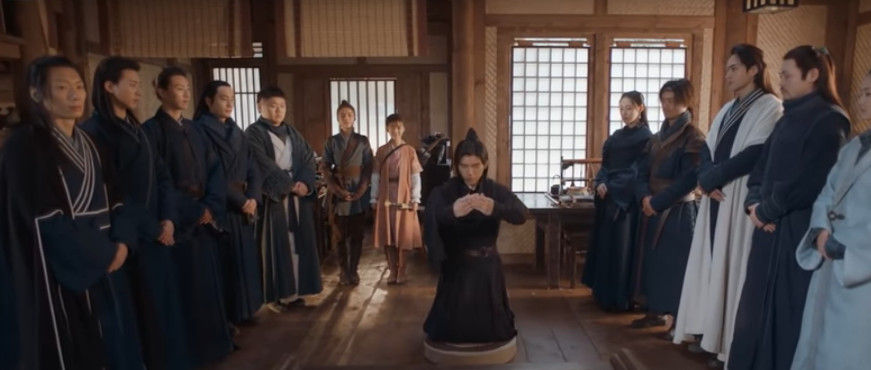When A Good Teacher Is A Bad Fit
- walkingtengu
- Apr 17, 2019
- 4 min read
Updated: Apr 18, 2019
Traditionally, the act of entering into a martial practice under the instruction of a teacher required the insertion of the student into a hierarchy. This is a common human pattern as it can be found across many different historical periods and cultures. The master and the apprentice.
In the Chinese martial arts this can be seen in the 拜師 (bàishī) ceremony where one formally becomes an apprentice to a teacher. Literally translated this means "bow to teacher." There can be a benevolent parental tone to such things, but there can also be at times a dangerous, cult-like undertone. It all depends on the teacher and the group one is submitting themselves to for instruction. In some schools you are formally being "adopted" into the "family."

The ability of a teacher to take on more than one student is in some ways a very personal issue. A teacher needs to have a sense of where the student's skills and abilities are currently at, as well as what unique challenges they face. While students may face similar challenges to each other, they rarely all face the exact same ones in their training. Some teachers can take on more students than others. However, more than this is the need for the teacher and student to be able to build a relationship.
During the last few centuries some new methods of doing things came into being and with them the idea of mass communication, mass education, mass production. These changes altered the way we think about the teacher/student relationship. An individual student, in many cases, came to have a much less personal relationship with their teacher and likewise in an effort to mass educate, it became more difficult for teachers to take a personal touch to a student's education.
These changes also filtered into the way that the martial arts were taught. Modern martial arts tend to be more like widget factories than personalized educational experiences. That's understandable. It takes a lot more investment to personally train an individual than it does to mass educate a room full of students. If the end goal of mass education is to raise the minimum bar of education for one's population... then you will naturally have to sacrifice the time and attention needed to forge a few "stars" at the expense of the rest, to instead get a little education into the lowest common denominators. I spend quite a bit of time harping on how students need to take responsibility for their training and be "teachable" people. In many cases, this is the natural progression of removing the responsibility of individualized training off the shoulders of the teacher and on to the student.
Over the years I've had quite a few different teachers. Some were only for a few months, others were for years. One thing that has made one teacher stand out from the others is the personal touch that he can take to my training. He's not just mass educating a bunch of beating hearts with wallets. He is also not just blindly teaching his martial art exactly the way he practices it himself. Instead he adapts the art to each of his students to directly address their body type, mentality, attitude and learning style.
Not every student gets this. Some, for a variety of reasons, are unteachable. Some are so inconsistent in their training that they never stick around long enough to overcome the most basic of training challenges. He runs a very modern school. Yet, ends up teaching in what might be considered a very traditional manner.
This dynamic works both ways. Not only do the traits of the student need to be the right combination to learn from a particular teacher. So too do the traits of the teacher need to align with the student.
Another teacher I briefly engaged with never even got to the teaching stage. Over the course of just a few interactions it became clear that his personality and mine just weren't a good match. He's a very good teacher and has a thriving school. So this is not a negative reflection on him. We are still friends today.
However, students need to remember that they can have a very skilled, competent, "good" teacher and it still be a bad fit for them. Even for a modern martial art, the relationship between teacher and student goes both ways. I don't think many teachers need a reminder that some students aren't right for their school. They can usually tell pretty quickly if a potential student is going to be a good fit in their community or not.
I would suggest to students though, that it is also worth your time admitting when a teacher is not a good fit for you. All other variables being equal. If you have the time, resources and ability to seek out a teacher that is a better "fit." Then do so. If you don't have other options, then buckle down, do the hard work and bite your tongue. Do your best under the teacher you have because at the end of the day no one teacher is perfect.
However, if you can find "the right" teacher. It will be good for both you and the teacher you chose not to work with. Again, this is not a criticism of either the teacher or the student... just an acknowledgement that some teaching relationships work better than others.
Listen to the podcast "Walking With The Tengu" at: https://anchor.fm/walkingtengu for analysis and thoughts on how classic works are meaningful to the modern martial artist.



Comments